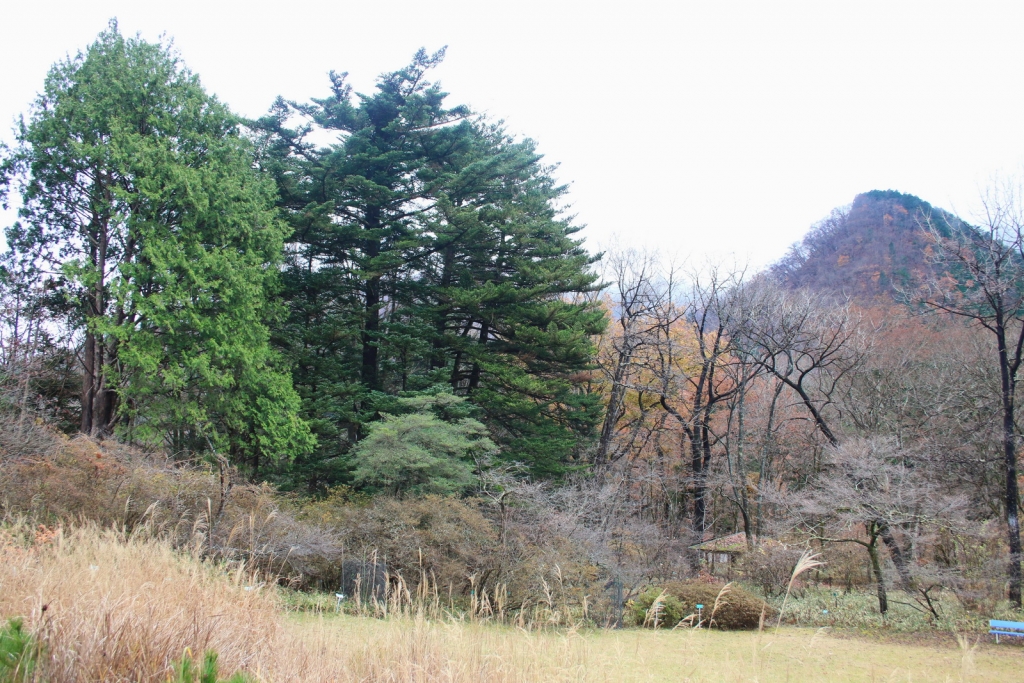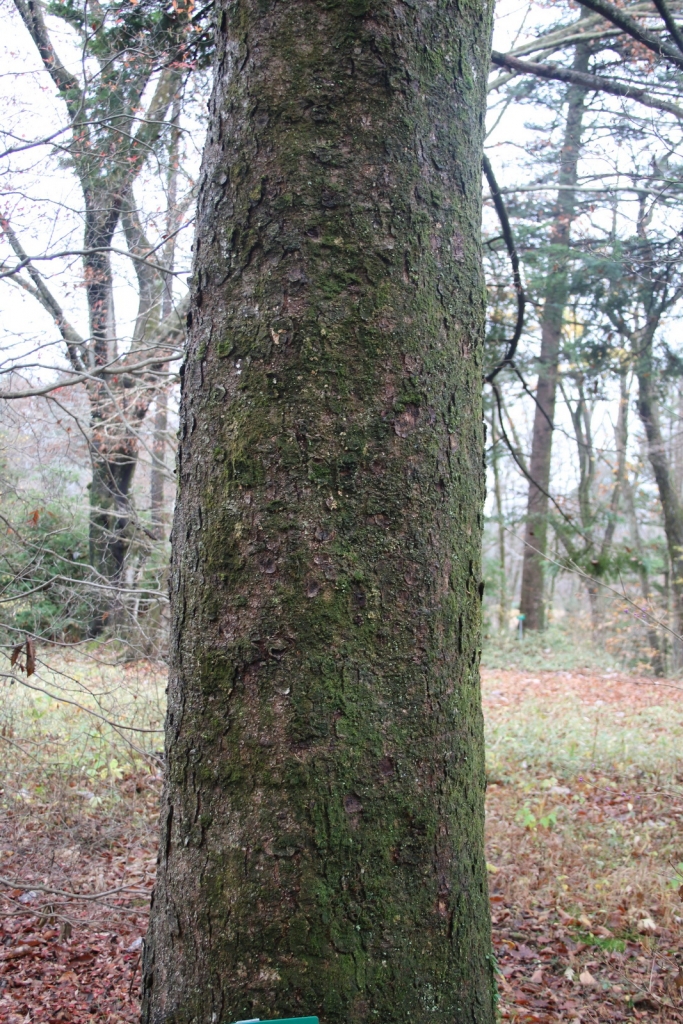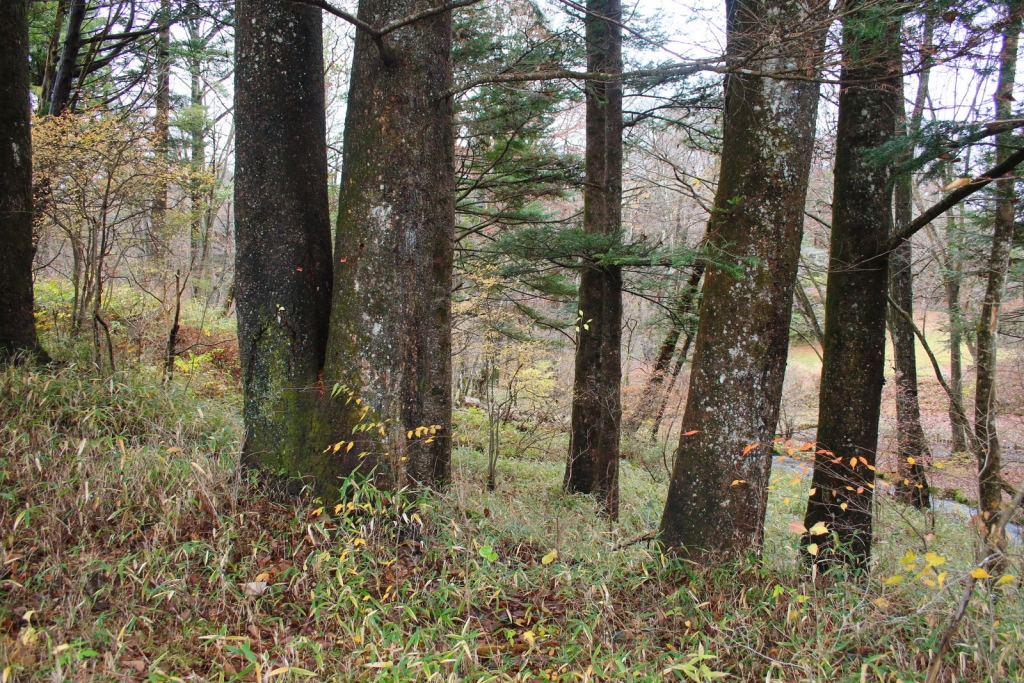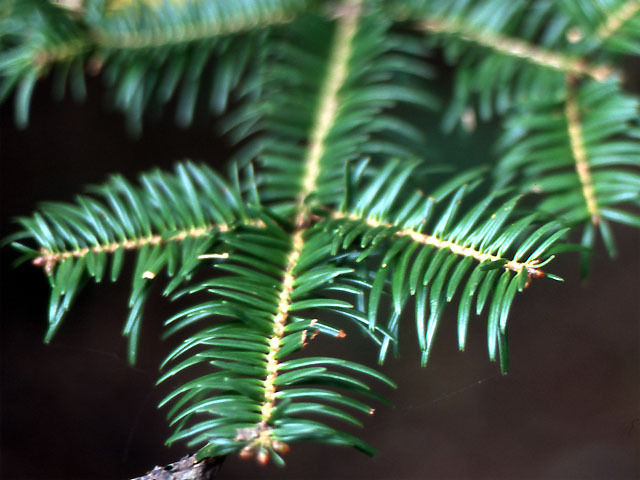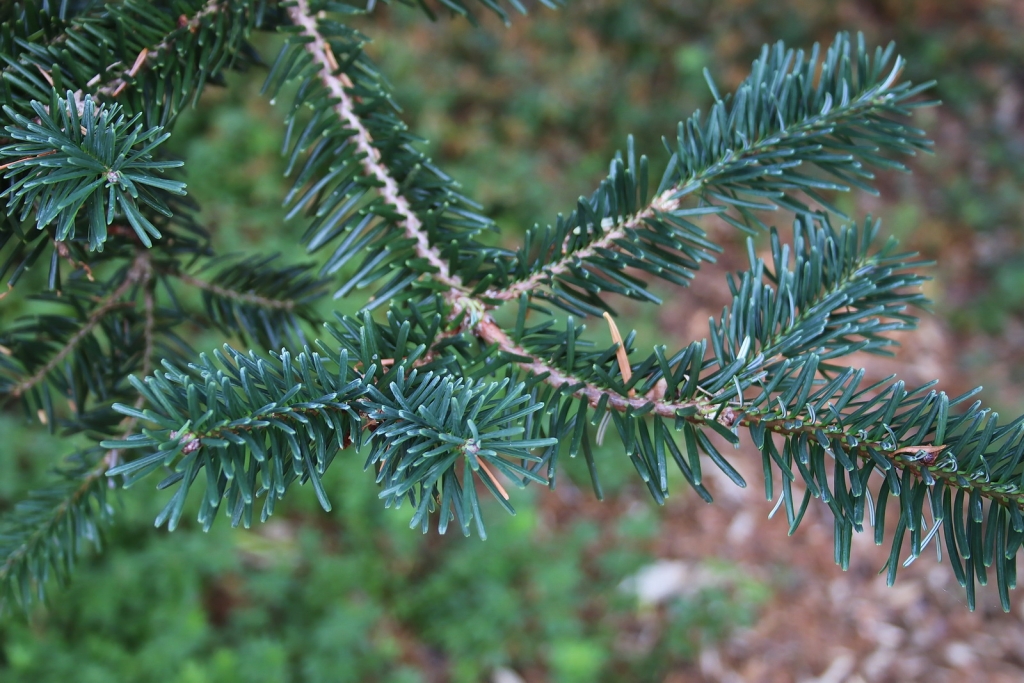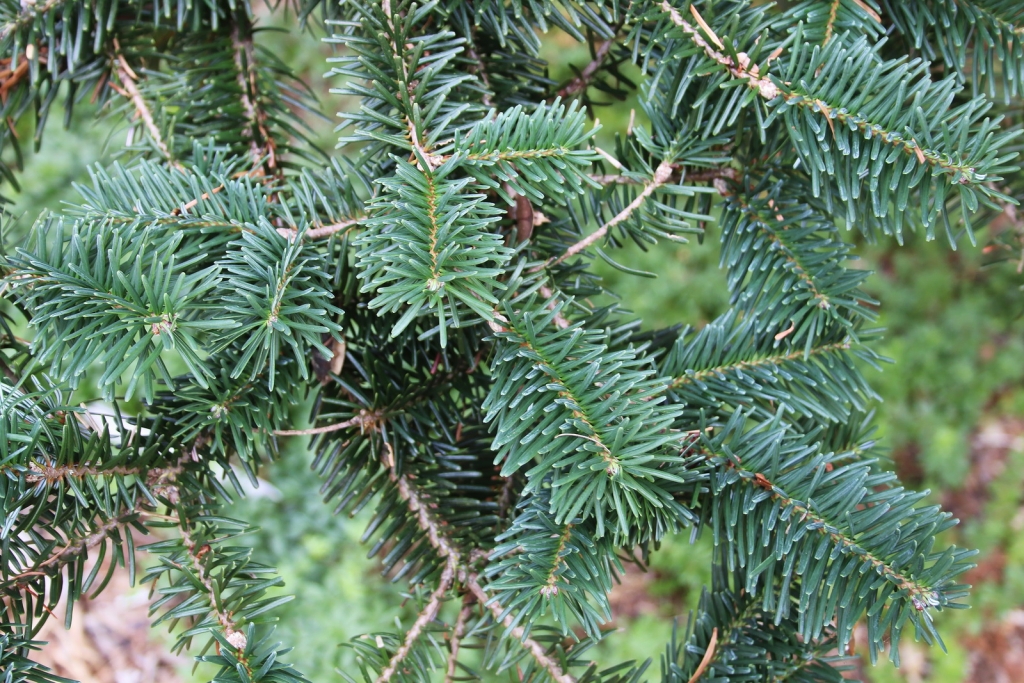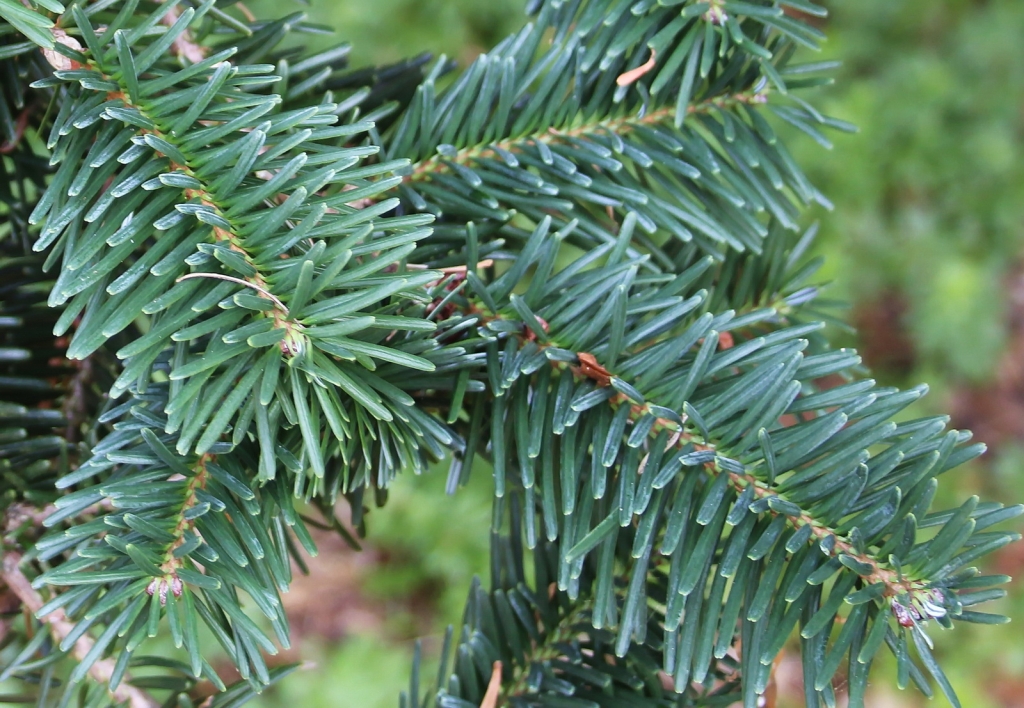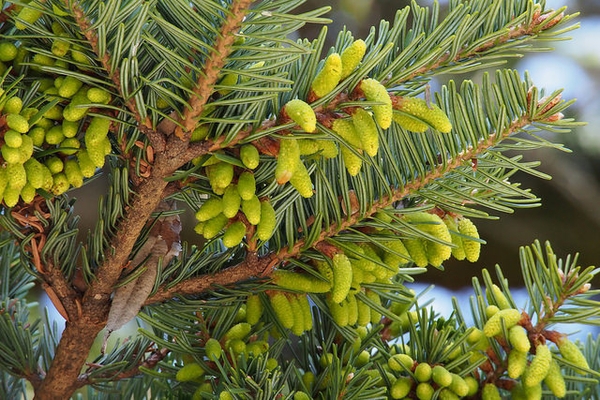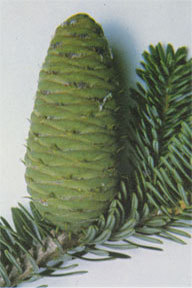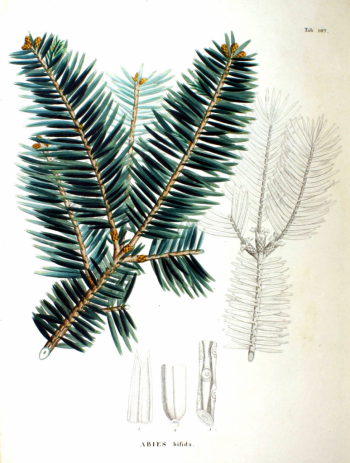
Abies firma, as described in 1842 by Philipp Franz von Siebold (1796-1866) and Joseph Gerhard Zuccarini (1790-1848), in Flora Japonica, 2nd edition, is commonly known as Momi fir; or as モミ (fir) in the Japanese language. The species name emphasizes this conifer's stiff needles.
Ethnobotany. In Japan, the wood is used for construction and coffins. As with most species having wood of a uniform light color, the Japanese find it exceptionally pleasing. In the U.S. and Europe it is a popular ornamental species, as well as proving to be a valuable seedling for use in understock for other fir species for planting in the southeastern U.S.
Description. Momi fir is an medium- to large-sized, evergreen coniferous species of tree that grows to mature heights of 160 ft (50 m) tall with a 6 foot (2 m) wide trunk diameter, measured at breast height. Its broad, conical crown of straight branches rises at an angle of about 20° above horizontal.
Distribution. This species is native to Japan - Honshu, Shikoku, Kyushu, and Yakushima islands at elevations 160 to 6,000 feet (50 - 1900 m) above sea level, rarely in pure stands on dry sites, usually in mixed forest with a variety of other conifers; where climate is warm-temperate to cool, with annual precipitation in excess of 32 inches (1,000 mm)
Hardy to USDA Zone 6 - cold hardiness limit between -10° and 0°F (-23.2° and -17.8°C) and its preferred climate is humid continental.

